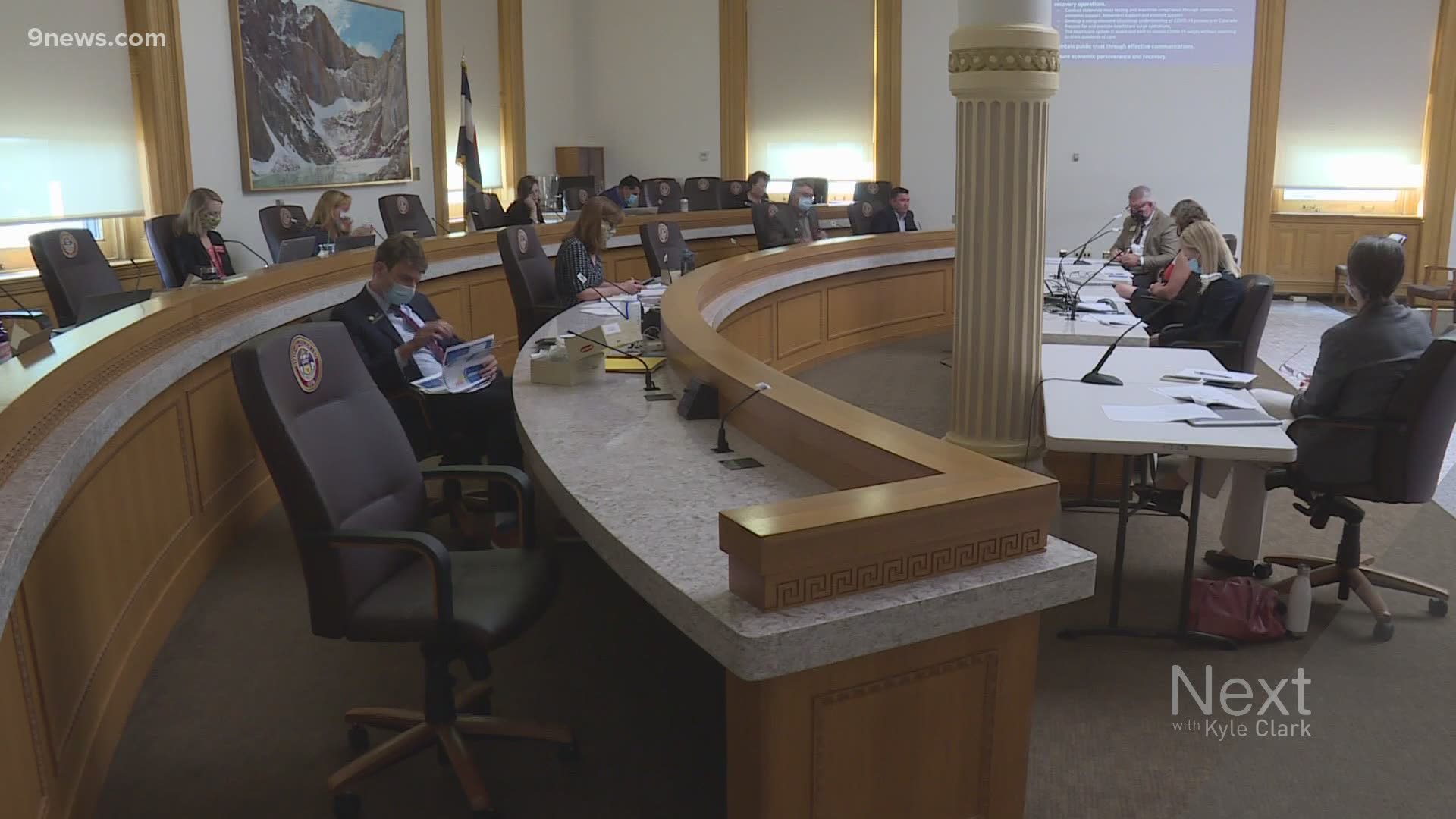DENVER — Five months into an emergency declaration, Colorado's governor has more power than he normally gets.
Since declaring a disaster emergency on March 11, Gov. Jared Polis (D-Colorado) has issued 155 executive orders relating to COVID-19.
Under an emergency declaration, Polis has the power to suspend state laws if those statutes or rules would prevent or delay necessary action in coping with the disaster emergency.
Two of his executive orders have been challenged in court.
The first allowed for the electronic collection of petition signatures, instead of requiring groups to collect 124,632 valid signatures in person to qualify an issue for the November ballot.
RELATED: Colorado Supreme Court overturns Polis' executive order allowing virtual signature gathering
A judge ruled that Polis did not have the power to alter that part of state law.
The second issue being challenged in court is Polis' executive order ending restaurant and bar alcohol sales at 10 p.m.
The state legislature, which normally sends bills that alter state law to the governor for his signature, are bystanders as he wields the power of the legislature and the executive.
An emergency declaration, which lasts 30 days at a time, can end when it expires, when the governor ends it early or if the legislature convenes, and by majority vote, votes to end the emergency.
When the legislature reconvened in May and June, it passed a bill, signed by Polis, that required the governor and/or his emergency response team to provide updates to the state legislature.
Tuesday was the first of those updates.
Polis did not appear in front of the committee because he had "scheduled time away," but members of his executive team did.
40% of COVID cases come from asymptomatic individuals
Kacey Wulff, the senior advisor for COVID-19 response, was the first to present.
She provided a statistic that revealed how many COVID-19 cases are from people who never even know they were sick.
"It's estimated that about 40% of new cases are acquired from somebody who doesn't have symptoms," Wulff said.
R0 number is 0.67
Colorado Public Health and Environment Director Jill Hunsaker Ryan provided a public health presentation that showed the state's R-naught (R0) is less than one.

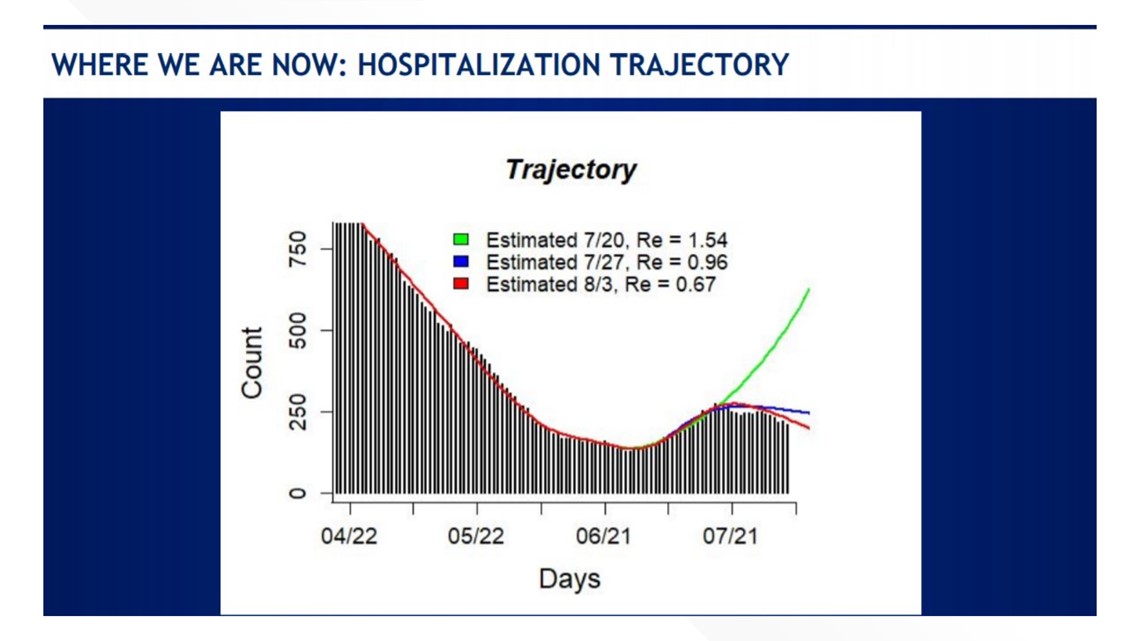
As of Aug. 3, the state's R0 value was 0.67. A value less than one means that one person will infect fewer than one other person, thus creating a decline in COVID-19 cases.
The state's R0 was 0.96 on July 27 and 1.54 on July 20.
Ryan cautioned about what will happen to the R naught over the next couple of months.
"We expect the R0 value will rise in the fall with school back in session," she said. "The school of public health provides modeling data on a weekly basis, and we will be watching this metric very carefully."
20% unsure of September mortgage/rent payment
On Monday night, Polis extended his executive order that requires landlords to give 30-day notice to tenants before filing eviction paperwork in court. Outside of the emergency declaration, a tenant is given 10 days notice.
In June, Polis allowed an executive order to expire that temporarily banned evictions.
At Monday's presentation, the state's budget director, Lauren Larson, explained how mortgage or rent is a question mark for one-in-five adults.
"Twenty percent of adults in Colorado report low confidence that that they can pay next month’s rent or mortgage on time," Larson said in her presentation.

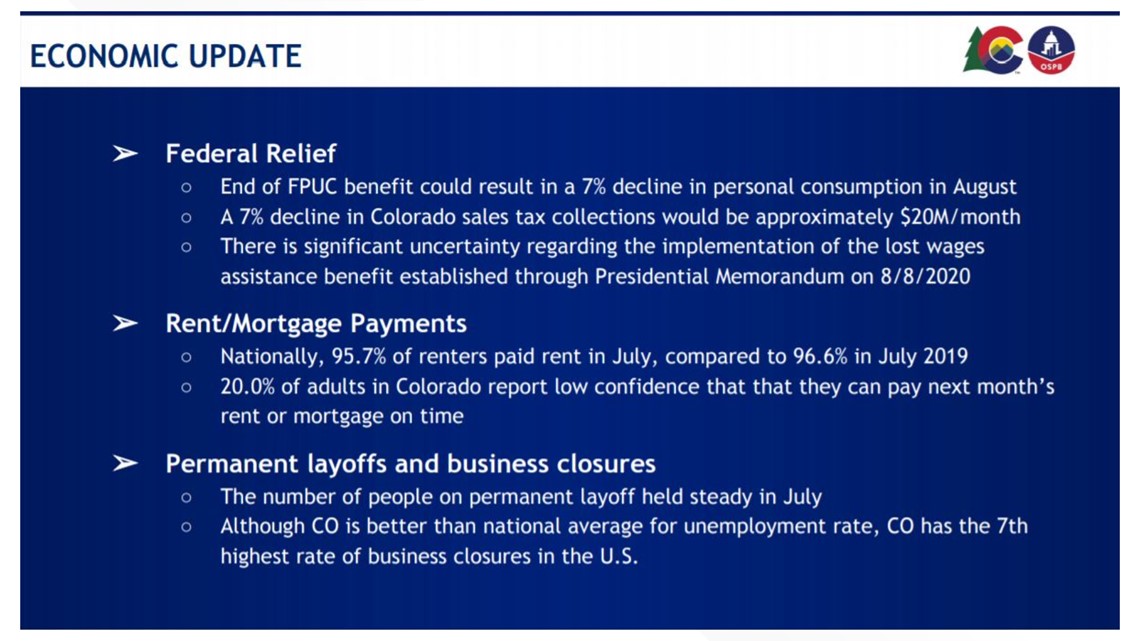
"With the turning off of the enhanced benefit for unemployment, we'll be watching and then, depending on what we're able to do with the presidential action or not, we'll be watching that very closely to see what happens with the next month's data," Larson said. "One-in-five is a very high number for housing insecurity."
She followed that with a statistic that the number of people on permanent layoff was steady between July and August.
"We have the seventh highest rate of business closures in the U.S., so we are very concerned and watching that," Larson said.
Next with Kyle Clark asked Polis's spokesman why the governor only extended eviction timelines and didn't bring back an eviction moratorium.
“We know this is a challenging time for hardworking people. The Governor has taken bold action to enact a moratorium on evictions while Colorado’s economy was stuck under Stay at Home in April to help save lives. Now that our economy is more open, we have taken common-sense steps to ensure that renters have the opportunity to get on their feet, including a $20 million fund to help people pay rent," spokesman Conor Cahill said. "The Governor just extended an Executive Order to ensure that renters have time to work out a reasonable repayment plan and provide 30 days to catch up on rent through an extended right to cure."
$125 million to rent, build and prepare alternative care sites.
The cost for five statewide alternative cares sites will be $125 million through the end of the year. That's the cost to rent space, build the facility and the contracts necessary to make it a field hospital.

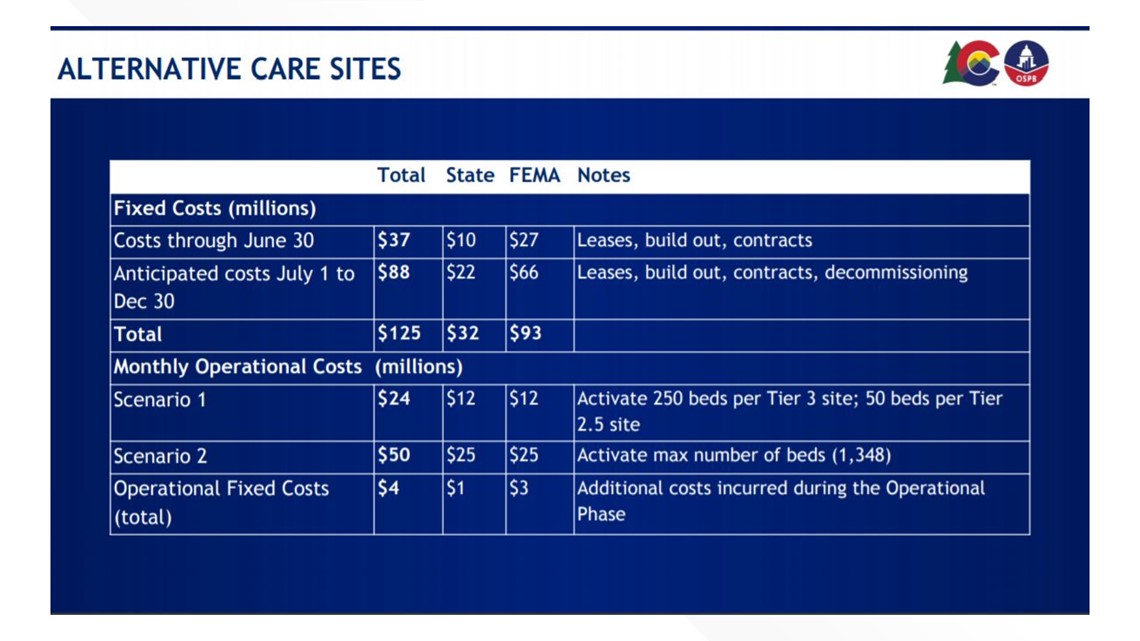
The Colorado Convention Center lease costs $60,000 a day. The other facilities are The Ranch in Loveland, Centura Health in Westminster, St. Mary Corwin in Pueblo and Western Slope Memory Center in Grand Junction.

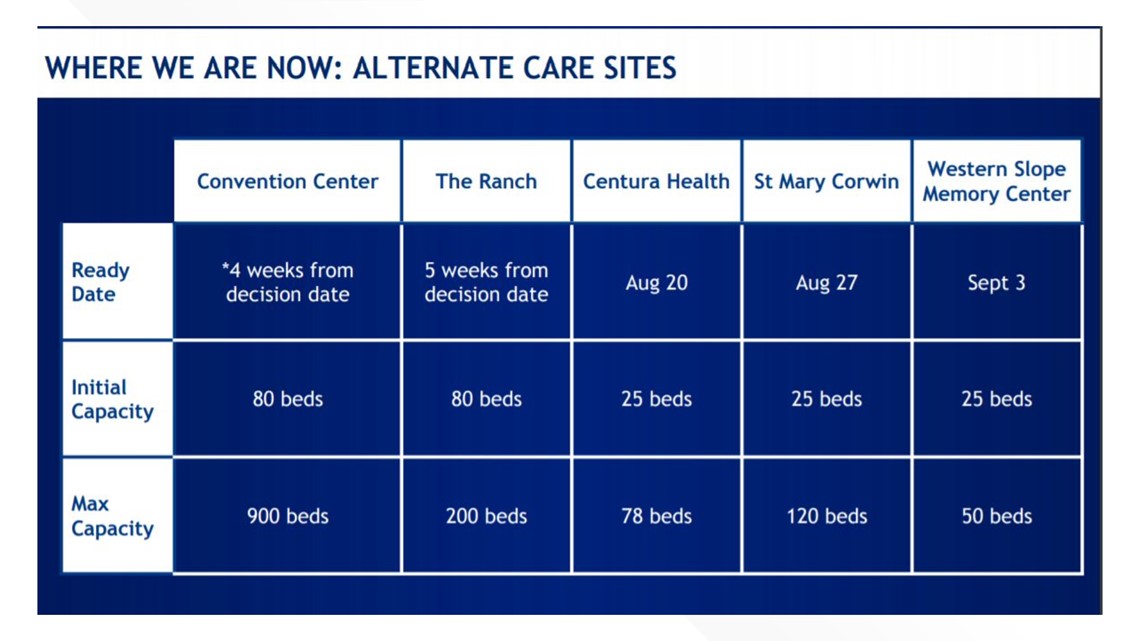
If these sites open, it means hospitals are at capacity, which we are nowhere near. The sites are not hospitals for patients to walk into, but rather step down facilities if the hospitals get too full. They can also be a place for people to get medical care if they need to get away from an outbreak. For instance, if there is an outbreak at a long term-care facility, residents can be transferred to one of these alternative care sites.
Funding from the CARES Act and FEMA will cover the cost of the rent and build out.
The cost of patient care, however, could fall on the state.
"We do have word from FEMA that they want us to bill patients that go in there, so we are working with our partners on how do we do billing," said Kevin Klein, director of Homeland Security and Emergency Management. "We believe that it's actually more expensive to bill these patients, to set up a billing system, than it is just to eat that portion."
The next update from the governor's COVID-19 response team to the state legislature is in December.
SUGGESTED VIDEO: Full Episodes of Next with Kyle Clark

